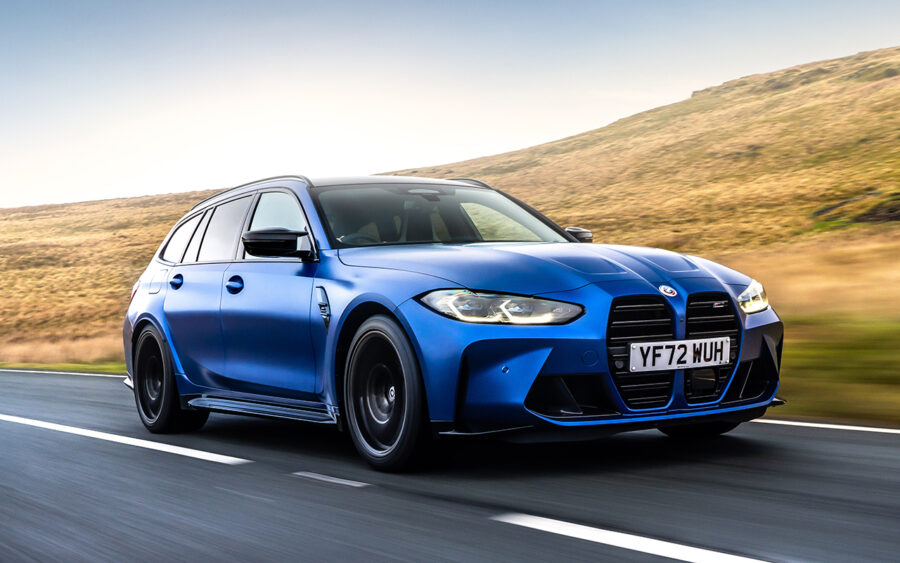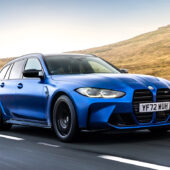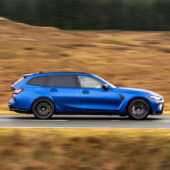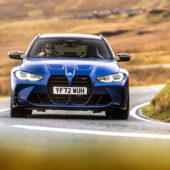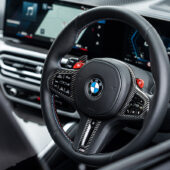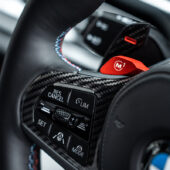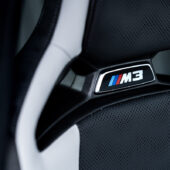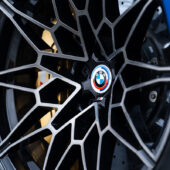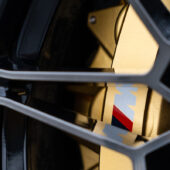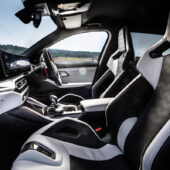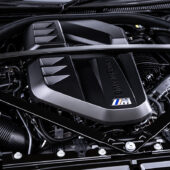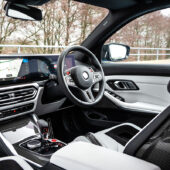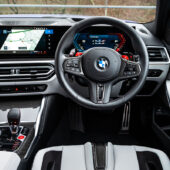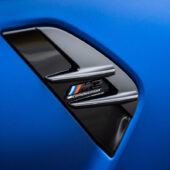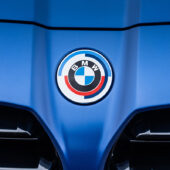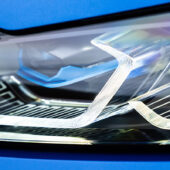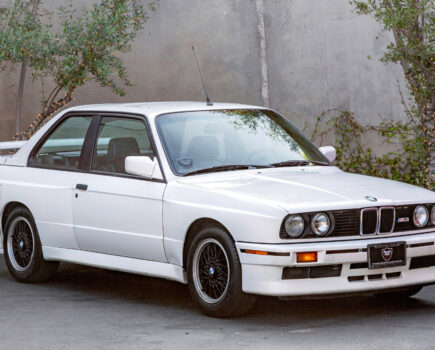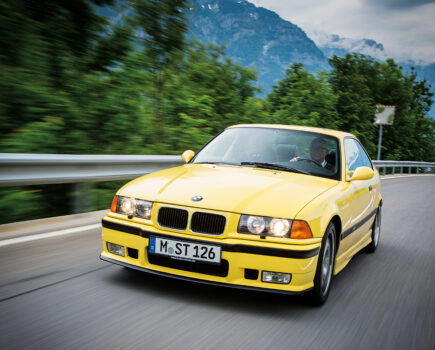BMW has, to much fanfare, built the M3 Touring we’ve been asking for for years. We get behind the wheel of this practical yet fearsome performance estate
Words: James Fossdyke Images: BMW
This is it: the car we’ve all been waiting for. More than 20 years after BMW secretly built a one-off E46 M3 Touring, and after years of shameless badgering from fans of the brand, the M division has finally put an M3 estate on sale. And it couldn’t have chosen a riskier moment. At a time when internal combustion is under attack, and we’re all plumbing the depths of a cost-of-living crisis, BMW has unleashed a twin-turbo straight-six M3 wagon that costs almost £100,000. Maybe it was a question of now or never for the BMW bigwigs, so amid our joy at the M3 Touring’s arrival, we’re willing to ignore the business reasons behind it.
What we probably shouldn’t ignore, though, is the nagging doubt in the back of our minds. They say you should be careful what you wish for, and there are some alarm bells surrounding this G81 M3 Touring. First, there’s the question of the all-wheel-drive system, which is fitted as standard to the M3 Touring – or the M3 Competition xDrive Touring, as we should really call it – but won’t from here on in. The xDrive system works well as an option on the M3 Competition saloon, but it might have been nice to leave us with the option of a pure, rear-drive M3 Touring as well. Perhaps more importantly, the new M3 Touring is based on the facelifted G80 M3, which is widely regarded as quite possibly the ugliest M car ever.
Certainly, it has a few hurdles to negotiate, chief among which is the front grille. The classic kidney grille fitted to ‘normal’ G81s, including the M340i xDrive and M340d xDrive, is a handsome thing, but the M cars get these elongated nostrils that remind us of cartoon character Bugs Bunny. Yes, the impact of the nose is colour-dependent, and we have to admit we’re getting used to its shape as time goes on, but it’s still less attractive than the conventional grille.
Other than that, though, the M3 Touring looks pretty mean. The rear end is much the same as that of the standard 3 Series Touring, albeit with a big roof spoiler, four massive exhaust outlets and a deep diffuser insert, while the estate also inherits the M3 Saloon’s side air vents, aggressive skirts and flared wheel arches.
The whole lot is set off by the standard alloy wheels, which measure 19” in diameter at the front and 20” at the rear. Those rims are shod in Michelin Pilot Sport rubber and completely fail to hide the massive brakes. As standard, you get the M Compound brake system that’s marked out by red brake calipers, but carbon-ceramic discs are available as an option, and they come with blingy gold calipers. Despite that bit of chintz, the overall impression is one of power, even with that challenging front end. The M3 Touring is a beast, but swollen nose aside, it’s a good-looking one.
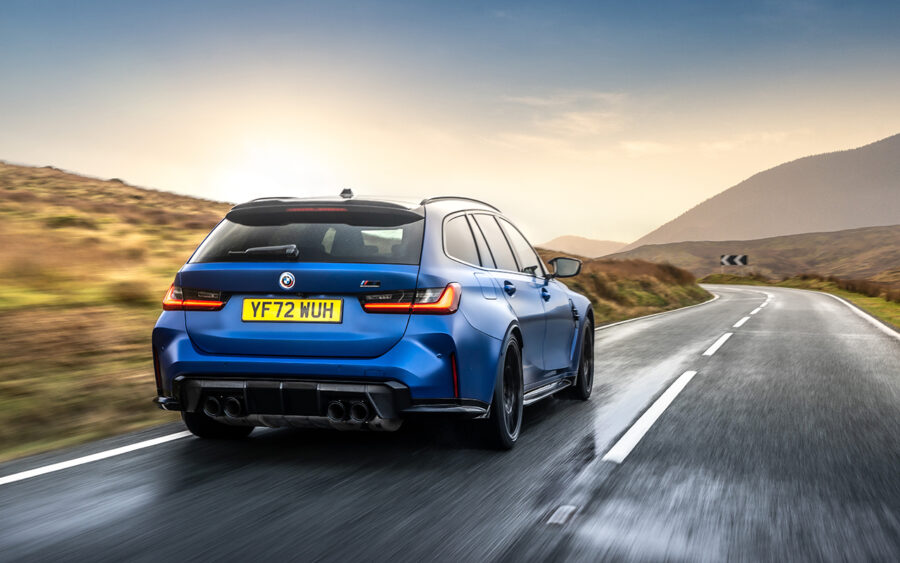
Inside, things get even more M3-ish. The basic design is lifted straight from the facelifted G8x, including the Curved Display infotainment system and redesigned dashboard, which is both a blessing and a curse. For starters, it means you get the new digital instrument display, which is a definite win, but it also means BMW has done away with climate control switchgear, preferring to house all those controls on the screen. While it’s far from the worst touchscreen climate control system we’ve used, we’d still rather have the buttons. Climate control aside, though, the touchscreen is pretty good, and it’s made even better by the inclusion of the iDrive controller, which allows you to cycle through menus with only cursory glances at the screen. That makes it much less distracting to use on the move.
Obviously, the M3 Touring also has the little details that mark M cars out from standard G8x 3 Series models, including the M gear selector, the carbon-fibre gear shift paddles and the M steering wheel with little red thumb buttons. There’s a red ignition button, too, and you get M-specific graphics on the instrument display.
By the same token, the M3 Touring gets the same high-quality finish as the saloon, which means everything feels nice and solid, and the materials are lovely. The carbon-fibre trim looks great, and the leather is soft and tactile, while the stitching is all millimetre perfect. It’s everything you expect an M3 to be.
All this will be familiar to post-facelift G80 M3 owners, but where the M3 Touring really differs is further back. Rear-seat passengers benefit from a smidge more headroom than they would get from the four-door car, while legroom has always been ample. But the figures suggest the improvement in boot space – the raison d’être of an estate – is not that great. The M3 Touring has the same 500-litre boot as the standard G81 3 Series Touring, but that’s only a 20-litre improvement on the saloon. However, the numbers only tell half the story, thanks to the shape of that boot and the bigger tailgate opening, which means the Touring body is noticeably more useful.
And there’s no great performance penalty for that practicality. Up front, BMW has fitted exactly the same inline-six engine you’ll find in the M3 Competition Saloon, which means there’s a 3.0-litre, twin-turbocharged unit producing 510hp. That’s what engineers would call ‘a lot’, and when combined with the xDrive all-wheel-drive system and the eight-speed automatic gearbox (both of which are fitted as standard), it can get the M3 estate from a standstill to 62mph in just 3.6 seconds – just a tenth slower than the equivalent all-wheel-drive M3 Saloon. Compared with the rear-drive M3, it’s three-tenths faster.
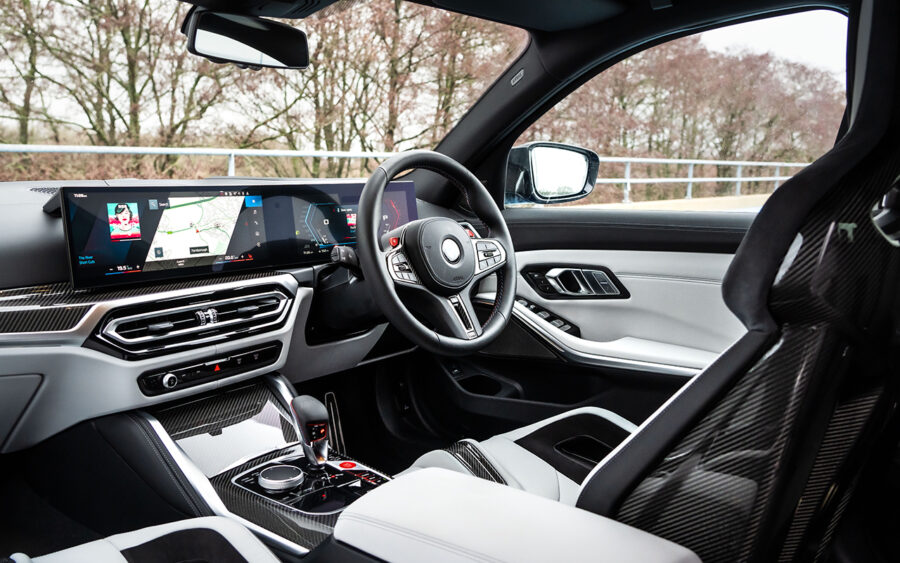
Of course, the top speed remains limited to 155mph on standard M3 Tourings, but BMW will sell you the optional M Driver’s Package, which includes a top speed that has increased to 180mph and a BMW driving course to make sure you know how to handle a high-performance estate.
That means showing the M3 Touring a few corners, and if truth be told, that’s where we half expected the big-booted BMW to fall down slightly. With a kerb weight of 1865kg, the M3 Competition xDrive Touring is 85kg heavier than the equivalent saloon, and you might expect that to have a noticeable impact on handling – particularly with most of that weight positioned high above the axles at the rear of the car.
But while the Touring’s larger body does indeed make a difference, it’s nowhere near as marked as it could have been. If anyone knows how to set up a high-performance estate car it’s BMW, and the M3 Touring is another doozy. Push hard, and you’ll feel the rear end trying to pull the car away from the apex – something you don’t get from the saloon – but that’s the only real difference. Other than that, the estate behaves more or less identically to the all-wheel-drive M3 Saloon, with tenacious grip, mind-blowing traction and astounding agility.
The steering and pedal feel are trademark BMW, and for 99% of the time, the M3 Touring feels every bit as planted and as stable as the M3 Saloon. Only when you push it will the differences show through, although the extent to which they impact the handling depends slightly on which driving modes you use. As with the M3 Saloon, you can tailor the experience to suit you, with a choice of three settings each for the engine, suspension and gearbox, and two each for the steering and brakes.
We prefer the more direct, more responsive feel of the Sport setting for the steering and the brake pedal, particularly with the optional carbon-ceramic braking system fitted to our test car. The extra steering weight doesn’t feel particularly natural, but it does feel slightly less slack around the straight-ahead position, and it inspires fractionally more confidence. The same goes for the brakes, which feel a little bit woolly and soft in Comfort mode, particularly if there’s no heat in them. Switch to Sport mode, and they feel slightly sharper and more powerful.

The suspension, however, is best sampled in Comfort mode, or at least it is if you’re going somewhere rather than driving for the fun of it. As with the M3 Saloon, it still feels a bit firm at lower speeds, but it improves significantly at speeds above 40mph. Once you’re on the motorway, it feels only a little firmer than an M340i Touring, so it’s a very pleasant car in which to cover long distances. As long as you avoid the under-padded bucket seats, that is.
But when you come to a good road, we’d recommend switching to Sport mode. There is an even more aggressive Sport Plus setting, but that’s really too firm and jiggly for use on UK roads. Even on faster stretches, it smacks into potholes, and that can make it feel quite unsettled, although it does offer outstanding body control on smooth surfaces. But they are sadly few and far between in this country, so Sport offers the better compromise when you find a more entertaining back road.
The same goes for the engine, which is at its ‘snarliest’ in Sport Plus mode, whereas Comfort mode leaves it sounding a little flat. The straight-six is naturally very smooth and refined, but combining the Sport setting with the active exhaust system gives it quite a pleasant growl. But the transmission, which comes with three different ferocity settings, is at its most road-friendly in the least forceful mode.
The all-wheel-drive system also comes with three settings, but there’s less scope to pick and choose your favourite. Opting for the 4WD Sport or RWD options – both of which dial back the all-wheel-drive system until it ultimately switches off – are only accessible by turning off some of the driver aids, which means they’re only really for track use. That said, the stock all-wheel-drive system is so smooth and user-friendly that you really don’t need to play about with it. It only allows a fraction of a turn of slip when pulling away, then it sorts itself out in a heartbeat, allowing you to make use of the traction while still providing the balance you’d expect from a rear-drive M3.

Happily, although this all sounds quite complicated, BMW’s system allows you to customise each of these settings individually, then save them to one of two groups called M1 and M2, accessible by pressing the little red M switches on the steering wheel. That means you can choose a comfort-orientated setting for long motorway drives or taking the kids to school, then switch to a more performance-centric set-up when you want to have a bit of fun on a track or a back road.
To a degree, then, the M3 Touring can be whatever you want it to be, but its underlying character is much the same as that of the saloon, and that makes it a bit of an oddity in the M3/M4 range. The M3 Saloon has always been the softest and most everyday-friendly car in the line-up, while the M4 Coupé is the most hardcore of the lot. But whatever the positioning, each one has its own unique proposition. The M3 Touring, however, feels just like an M3 Saloon with a bigger boot and more passenger space.
Not that we’re complaining. The M3 Saloon is a brilliant all-rounder, and the M3 Touring is similarly fabulous. It takes all the things that made the M3 great – the pace, the handling and the quality – and it adds some extra practicality without materially damaging the driving experience. Perhaps it won’t quite cut the mustard as a track weapon, but track-day aficionados are unlikely to go for the estate anyway. Instead, the estate exists for day-to-day road driving, and it’s perfectly suited to the task.
If you want an M car to use for every occasion, this is it.

